Coming to L'Aquila has a bittersweet taste. It's not an experience that leaves one indifferent. Indeed, it's not the same as travelling in any other Italian art city.
The reference, of course, is to the 2009 earthquake, whose wounds are still very visible today. However, visiting L'Aquila at this particular moment also means witnessing beauty flourishing again.
That of its famous historic centre, pouring with monumental churches, fascinating squares and extended porticoes. But also the unscathed beauty of a population that is slowly and proudly regaining its everyday life.
Find here more about the Italian Capital of Culture 2026 and learn how to explore offbeat L'Aquila.

Non touristy things to do in L’Aquila like a local
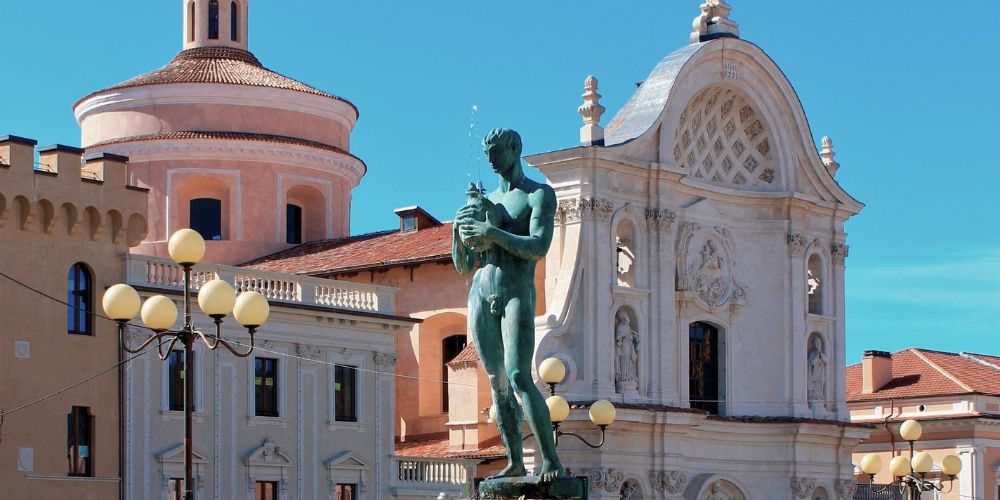
Walking around the capital of Abruzzo, you'll constantly come across construction sites, cranes, and workers. Nevertheless, many public spaces have been returned to the citizens, and although the tour can be somewhat alienating for obvious reasons, calling in with awareness and tact will allow you to rediscover wonderful treasures. And help recreate well-deserved flashes of normality.
Here you can find out what to do in its jewel of a city centre, where to go for a romantic day trip, what are the perfect places to take amazing photos and much more.
These are are our tips on what to see and do in and around L'Aquila. With a local touch.
10. Non touristy things to do in L’Aquila like a local. Crossing L'Aquila's porticoes
L'Aquila has recently seen its beautiful porticoes shine again. An authentic piece of the city's past, they cross Corso Vittorio Emanuele, the main street of the historic centre, and reach Piazza Duomo.
Walking under these ancient, iconic arcades is a practical advantage on rainy (or snowy) days, but the view will also benefit. A passeggiata sotto i portici is among the most authentic things to do in L'Aquila.
Indeed, Corso Vittorio Emanuele is punctuated by some of L'Aquila's most admirable and exciting buildings.
The street consists of two distinct sections. The northern one is known as Corso Stretto and is devoid of the arcades that line the southern section, the wider Corso Largo.
The 800 metres of this broad pedestrian avenue get to the heart of L'Aquila, Piazza Duomo, a place historically loved and frequented by locals.
Its other name is Piazza del Mercato, and the reason is quickly stated: for over 750 years and until the 2009 earthquake, this is where the city market was held. Shopping in the square was an integral part of everyday life, a 'normality' that the city is slowly regaining but which, to this day, is only confined to a few dates periodically marked by the municipality.
This piazza, one of the largest in Italy (140 metres long by 70 metres wide), is an imposing, luminous rectangle flanked by the Cathedral and the beautiful church of Santa Maria del Suffragio.
At the head and foot of the square, you'll notice the two fountains topped by twin statues. Together, the pair make up la Fontana Vecchia complex. Dating back to the 14th century, it has been remodelled several times due to the numerous earthquakes that have periodically struck the city.
Find what to do near L'Aquila9. Ice skating
Winter in L'Aquila can be a particularly mangy season but also candidly enchanting.
Snow suits this city incredibly well and matches the pale stone of its most stunning churches and buildings. White is the red thread during the cold season (by the way: did you know that there is a World Snow Day?).
Those considering visiting L'Aquila around Christmas will find a pleasant surprise: a large skating rink in Piazza Duomo. A voice in your head is exclaiming 'groundbreaking' in the same scornful tone as Miranda Priestley? Think again.
Of course, ice rinks are a common sight in many Italian cities. Nevertheless, the view of Piazza Duomo shining with lights, the giant Christmas tree, the traditional mercatino di Natale and snow-capped peaks all around... well, it will warm your heart.
After putting on ice skates, why don't wearing ski boots? When it comes to alpine sports in Abruzzo, the undisputed star of the land is its majesty Gran Sasso.
The highest peak in the Apennines is one of the most popular mountain resorts in central Italy, but certainly not the only one that skiing enthusiasts will appreciate. While Roccaraso is probably the most famous destination, Pescasseroli may be a good compromise for a wallet-friendly vacation.
Snow always on your mind? This activity is for you8. Take the most romantic trip
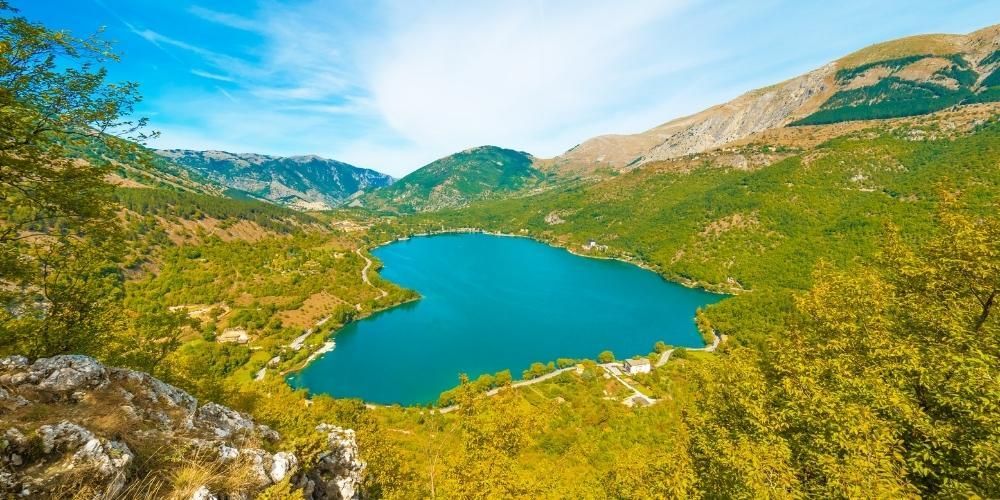
Lake Scanno is an unmissable place in Abruzzo and one of the most romantic spots you'll come across. Additionally, visiting its gorgeous surroundings is definitely something you should do when in L'Aquila.
This body of water, whose outline faithfully recalls the heart shape, shimmers at an altitude of one thousand metres in the verdant nature of the Sagittario valley, halfway between Villalago and Scanno, two medieval towns included in the Borghi più Belli d'Italia circuit.
Lake Scanno will win you over for many reasons. First, the presence of play areas and a picnic zone makes it particularly attractive for those travelling with families.
Along the shores, you'll find small pebble beaches lapped by Blue Flag awarded waters ideal for a relaxing deep or surfing.
Nearby footpaths, some of which head to Mount Genzana and Montgana Grande, offer some lovely treks, and whether you prefer moving on two wheels, there's nothing to stop you from taking a bike ride.
One of the most evocative routes to take near Lake Scanno is called Sentiero del Cuore (Heart Trail): it leads to an excellent vantage point to photograph the great emerald green heart at its best. And take a high-sugar level selfie with your sweetheart.
Book experience near L'Aquila7. Visiting a colourful village near L'Aquila
A little piece of Abruzzo you won't expect to see just an hour's drive from L'Aquila. Aielli is a delightful medieval village towering a thousand metres above sea level. It lies in the heart of the Velino-Sirente Regional Park and is scenically surrounded by valleys and mountains.
So far, nothing strange. Or rather, nothing one wouldn't predict to find in a province teeming with so many small towns that faithfully correspond to the description. Yet, this particular borgo has something different.
What is that something? A fabulous festival that has made Aielli one of Italy's most surprising street art villages. Created in 2019, Borgo Universo has contributed to enhancing this tiny jewel of La Marsica.
The result is an awesome open-air gallery. Walk through the historic centre, with the façades of houses and buildings imaginatively covered in shapes, colours and words, and find yourself in another universe, a dimension where street art gives new meaning to history and time.
If you are looking for unusual things to do in L'Aquila and nearby, consider a trip to Aielli, one of the most beautiful villages to visit in the area. Bonus tip: don't miss the the unparalleled panoramic view from the medieval Torre delle Stelle.
6. Photographing a luminous fountain
A meeting point for locals, Piazza Battaglione degli Alpini is home to one of L'Aquila's most photographed monuments, La Fontana Luminosa (luminous fountain).
Sculptor Nicola D'Antino realized this special symbol of the city in 1934. The composition consists of a large basin surmounted by two imposing bronze female figures holding a conca abruzzese, the traditional domestic container typical of this area.
The name Luminous Fountain is due to the play of light that brights at night. The spectacle, however, is guaranteed at any hour.
During the day, Gran Sasso's silhouette stands out among the bronze statues. At sunset, if you are particularly skilful with your camera (or even just tremendously lucky), you could try to reproduce the effect of a jet of lava pouring out of the basin, like the one portrayed in a 2022 viral shot.
The photo was first posted on Reddit and quickly made its rounds on the web. Also, the science portal Earthly Mission covered it.
Sunlight shining through the water makes the fountain appear to be gushing fire—a wonderfully dazzling illusion. Looking for unusual things to do in L'Aquila? Try to catch it and snap the perfect photo!
5. Jazz music in the streets
Thanks to an event that is, in its own way, an integral part of the reconstruction process, music is the protagonist of the first September weekend in L'Aquila.
In recent years, Jazz Italiano per le Terre del Sisma has established itself as one of the most popular festivals on the Italian music scene, luring tourists and locals to participate in the whirlwind of concerts invading the city spaces.
A sort of marathon involving more than two hundred musicians, it's the climax of another praiseworthy and involving occurrence, La Marcia Solidale (solidarity march).
This peculiar lay pilgrimage with a great (also) symbolic value covers seven days of hiking. It consists of a journey through nature in areas wounded by the earthquake (Marche, Umbria, Lazio and Abruzzo) amidst enchanting landscapes and views.
The week of excursions is pleasantly interspersed with the multiple musical events taking place along the stages of the walk.
4. Walking in the green
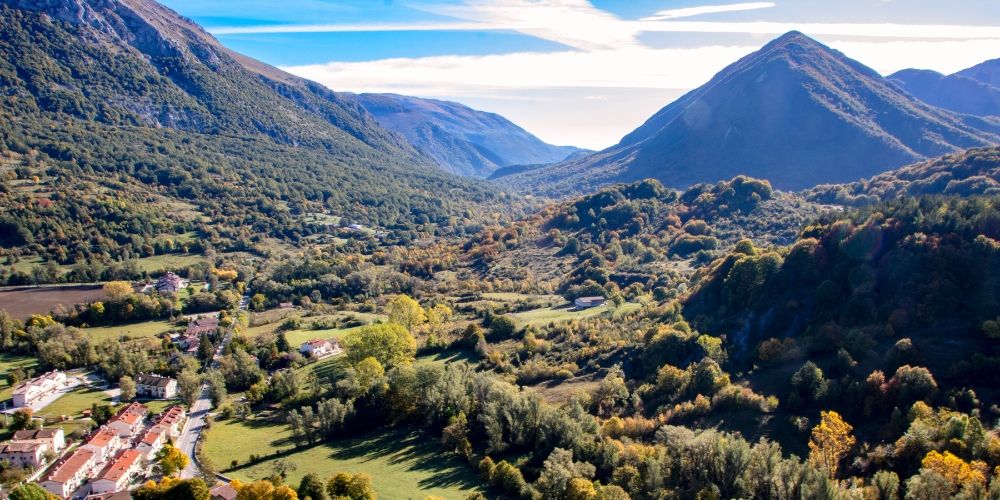
Visiting L'Aquila like a local also means experiencing its explosive nature, which dictates rhythms and spaces.
L'Aquila is a centre of art and culture, but the proud and overbearing context where it stands undoubtedly doesn't take second place. Look around: Gran Sasso and the Sirente and Velino ranges looming in the background will give you an idea of what we're talking about.
Even the name, which would intuitively make one think of an eagle (aquila in Italian), is actually a reference to water and the many springs that flowed in the area when the town was founded (13th century).
Indeed, there is plenty of nature in L'Aquila, and if you take a tour, you'll realise how much greenery invades it.
Il Parco del Castello is an example of this feature. It's the ideal place to take a relaxing walk, have an aperitif, stop and read a book or enjoy the view of the mountains.
Right in the middle of the park stands the 16th century Spanish Fort, for years home to MuNDA, the National Museum of Abruzzo. Refurbishment work is still being carried out after damage caused by the 2009 earthquake. The exhibition is now held in the old municipal slaughterhouse.
Another green and scenic area dear to the citizens stands just outside the walls delimiting the historic centre. Parco del Sole is close to la basilica di Collemaggio, a splendid national monument since 1992.
The park also hosts an ambitious land art project by American artist Beverly Pepper: Amphisculpture, a theatre literally cast in nature and made entirely of limestone.
3. Tasting Abruzzo wines

Book a wine-tasting tour of Abruzzo wines at one of the region's historic wineries: it will be one of the most authentic things to do in L'Aquila.
The local wine scene holds surprises in store, with an interesting range of wines you can enjoy in the wine shops of the centre or directly in the vineyard during a visit among barrels and rows of vines.
The province of L'Aquila boasts a good number of denominations of origin (Abruzzo DOC, Cerasuolo d'Abruzzo, Montepulciano d'Abruzzo and Trebbiano d'Abruzzo) and wineries that have reached levels of absolute excellence thanks to niche products of the highest quality.
Teramo, Cheti, and Pescara are the other areas that are involved in the wine industry. The gem to discover? The biggest barrel in Europe (1,000 hectolitres!), kept by the historic Cantina Mazzarosa in Roseto degli Abruzzi.
Book Abruzzo Historical Cellar Tour And Tasting2. Attending a sagra
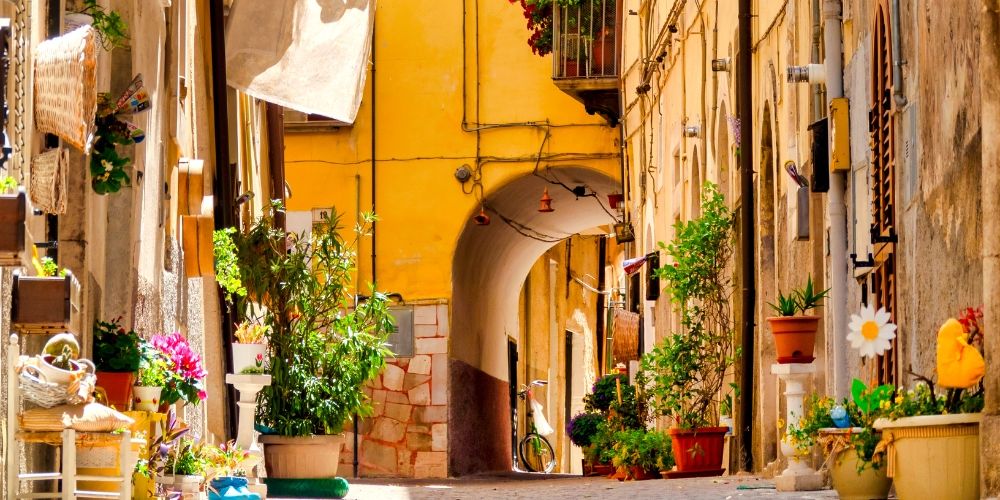
Abruzzo has some of the most popular sagre in Italy. Throughout the year, particularly in the summer months, dozens of towns scattered across the region's four provinces are filled with crowds of curious onlookers, gourmets, experts and sector operators who flock to attend the ritual celebrations that praise the excellence of the moment.
For example, the festival at Campo di Fano, a hamlet in the Peligna Valley, in the province of L'Aquila, has become a small cult of Abruzzo summers. The event is all about the red garlic of Sulmona, a Slow Food Presidium, and takes place on the second weekend of July.
Raiano cherry festival, the so-called Maggiolata, is another popular festival considered to be among the oldest and most enthralling in Abruzzo. Held in spring, it colours the village in the province of L'Aquila with flavours, music and shows, including a parade of floats with hundreds of costumed participants.
1. Attending a Unesco World Heritage Event

In 2019, Unesco added L'Aquila's Perdonanza Celestiniana to its Intangible Cultural Heritage List.
It is a celebration held every year on 28 and 29 August to commemorate the Bull of Forgiveness issued by Pope Celestine V in 1294, by which plenary indulgence was granted to those who entered the Basilica di Santa Maria di Collemaggio on those very days. The initiative is, therefore, a precursor of the Universal Jubilee of the Catholic Church instituted a few years later, in 1300, by Boniface VIII.
The end of August is one of the best times to visit L'Aquila: you will witness an extraordinary and unique tradition handed down uninterruptedly since the Middle Ages, which has helped cement the community's cultural identity.
The opening of the Holy Door and the great historical procession that precedes it is anticipated by two weeks full of events and well-timed moments involving L'Aquila and 23 municipalities nearby. Concerts, exhibitions, events and conferences complete an unmissable experience to live once in a lifetime.
About the author
Written on 22/08/2024


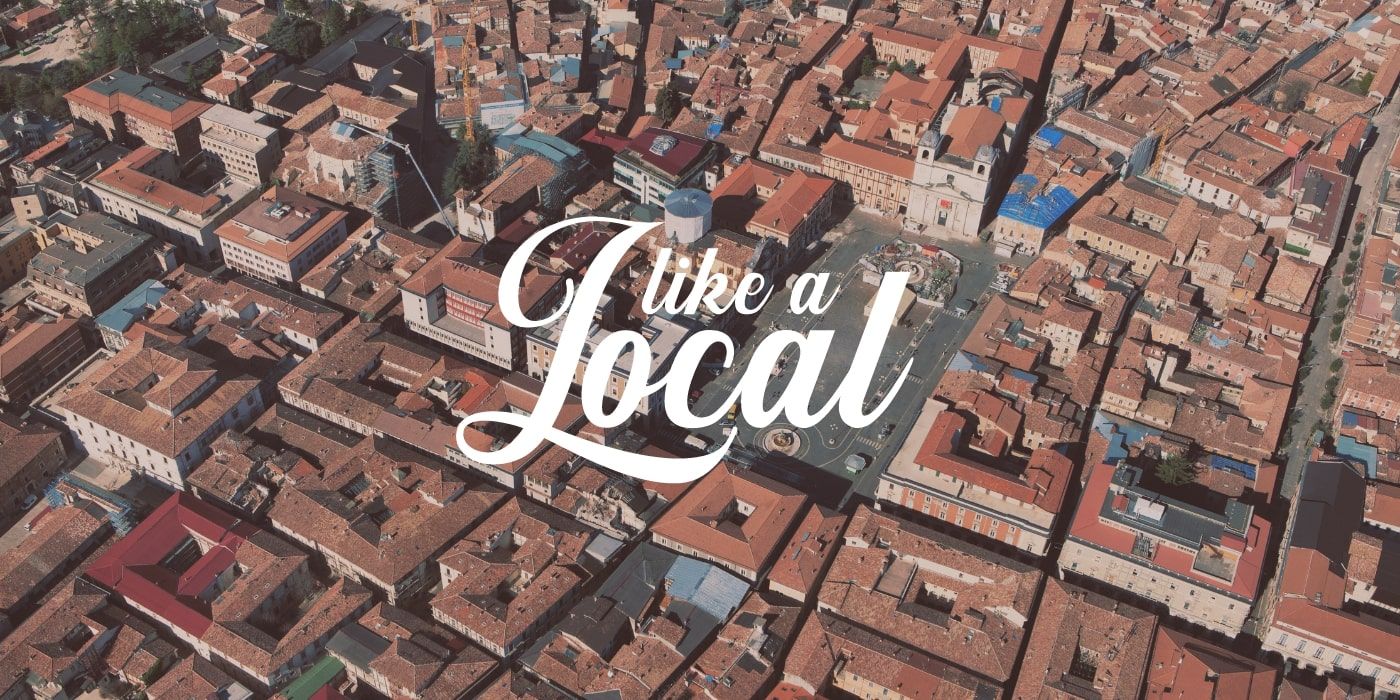
Lorena Calise
Find the most authentic things to do in L'Aquila and explore Italy's Capital of Culture 2026 like a local.